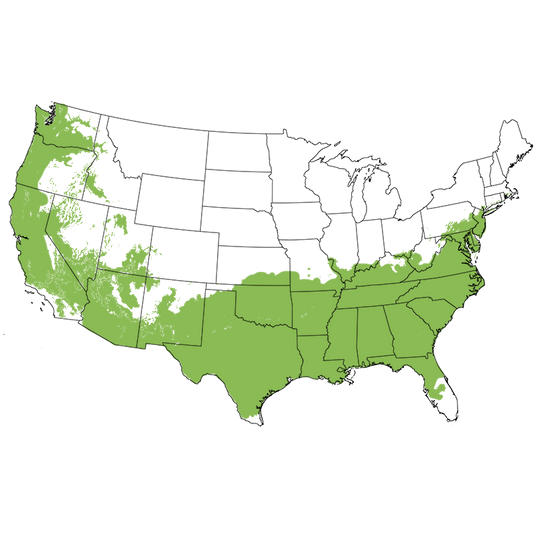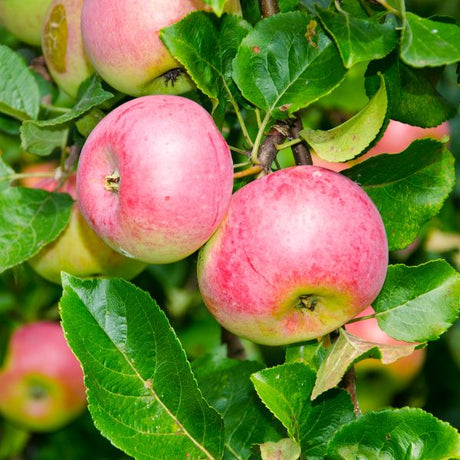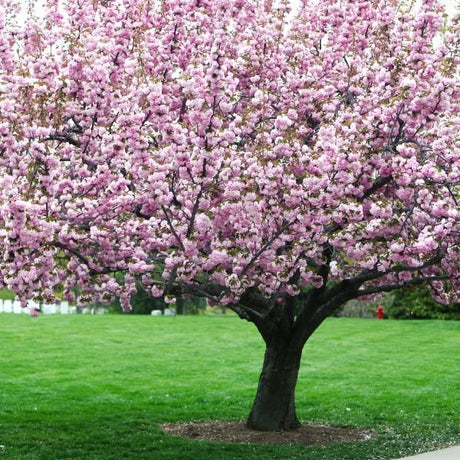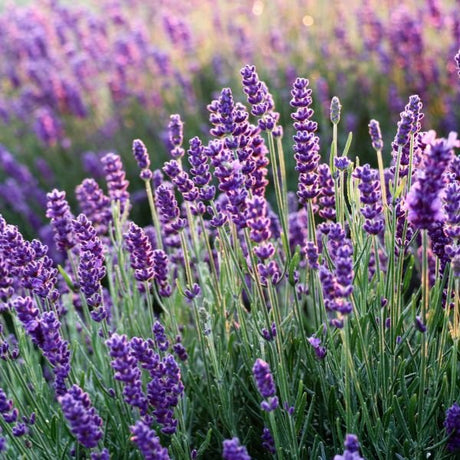Texas Mission Almond Tree
- Stay Protected with Plant Sentry ™
Texas Mission Almond Tree - #3 Container 3-4 Feet is backordered and will ship as soon as it is back in stock.
Plant Sentry™
Plant Sentry™
Plant Sentry is designed to protect both consumers and the nursery trade from invasive plant pests and diseases. Sites that display the Plant Sentry protection badge are protected from consumers buying and nurseries shipping material carrying invasive pests and diseases.
This proprietary eCommerce software prevents the shipment of a restricted plant to each state. The Plant Sentry system includes a shipment certification program. The Plant Sentry Compliance Officer works closely with NatureHills.com and each nursery or fulfillment center to ensure only compliant plants are sold to customers.
Click Here to learn more

Delivery and Shipping
Delivery and Shipping
Shipping
To obtain a more accurate shipment time-frame, simply enter your zip code in the “Find Your Growing Zone” box to the right. Our plants are grown all over the country and lead time on items may be different because of this. Once your order is placed, you will also receive the specific shipment time-frame information as part of your order confirmation. Once an item ships, you will receive shipment notification and tracking numbers, so you can follow along while your plant travels to your doorstep. We use FedEx, UPS, or USPS at our discretion.
Due to winter weather we have put a hold on shipping to the areas shown below in grey. You can still order now and we will ship the plant to you during an appropriate time for your zone.
Standard Shipping Rates
At Nature Hills we handle, package and ship the products you order with the utmost care to ensure healthy delivery. Shipping and handling charges are calculated based on the tables below. Please note that some items include an additional handling surcharge, these will be noted on the item's product page.
| From | To | S&H |
|---|---|---|
| $0 | $19.99 | $24.99 |
| $20 | $49.99 | $29.99 |
| $50 | $69.99 | $34.99 |
| $70 | $99.99 | $39.99 |
| $100 | $129.99 | $44.99 |
| $130 | $149.99 | $48.99 |
| $150 | $150+ | Approx 28% |
Click here to see our full rates
Buying Options for Plants
Nature Hills sells a large variety of plants with several options available. Plants are offered in both potted containers and as dormant bare root without soil. Here is a helpful resource to understand your options as you create a beautiful landscape with help from Nature Hills.
Ever wonder what a larger plant will mean for your landscape? Container Sizes are really all about the age of the plant!
Seasonally, Nature Hills offers hand selected, high quality bare root trees, shrubs and perennials. Bare root plants are sold by height from the top of the root system to the top of the plant. Plants may be taller than the height minimums.
- Popular sizes of select trees are 1 foot, 2 feet, 3 feet, etc.
- Popular sizes of select bare root plants is 1 foot, 18 inches, etc.
Nature Hills Container Size by Volume
Keep in mind, specific varieties and different growing conditions can affect the rate at which plants grow. Variations in size may occur.
| Young Plants to 18 Months | ||
|---|---|---|
| Size | Volume | |
| 2"x2"x3" | Ranges from | .18 to .21 dry quarts / .198 to .23 dry liters in volume |
| 4.5" Container | Equal to | .65 dry quart / .72 dry liter in volume |
| Sprinter Pot | Equal to | .63 dry quart / .69 dry liter in volume |
| 4" Container | Ranges from | .31 to .87 / .35 to .96 dry liter in volume |
| 6" Container | Equal to | 1.4 dry quarts / 1.59 dry liters in volume |
| 1 Quart | Equal to | 1 dry quart / 1.1 dry liter in volume |
| 5.5" Container | Equal to | 1.89 of a dry quart / 2.08 dry liters in volume |
| 4"x4"x5" | Ranges from | .8 to 1.1 dry quarts / .88 to 1.2 dry liters in volume |
| 4"x4"x6" | Ranges from | 1.0 to 1.3 dry quarts / 1.1 to 1.41 dry liters in volume |
| 4"x4"x9" | Ranges from | 1.1 to 2.1 dry quarts / 1.2 to 2.3 dry liters in volume |
| 4"x4"x10" | Ranges from | 1.7 to 2.3 dry quart / 1.87 to 2.53 dry liters in volume |
| Plants 18 Months - 2.5 Years Old | ||
|---|---|---|
| Size | Volume | |
| 2 Quart | Equal to | 2 dry quarts / 2.2 dry liters in volume |
| #1 Container | Ranges from | 2.26 to 3.73 dry quarts / 2.49 to 4.11 dry liters in volume |
| 5"x5"x12" | Equal to | 3.5 to 4.3 dry quarts / 3.85 to 4.74 dry liters in volume |
| Plants 2 - 4 Years Old | ||
|---|---|---|
| Size | Volume | |
| #2 Container | Ranges from | 1.19 to 1.76 dry gallons / 5.24 to 7.75 dry liters in volume |
| #3 Container | Ranges from | 2.32 to 2.76 dry gallons / 10.22 to 12.16 dry liters in volume |
| Plants 3 - 5 Years Old | ||
|---|---|---|
| Size | Volume | |
| #5 Container | Ranges from | 2.92 to 4.62 dry gallons / 12.86 to 20.35 dry liters in volume |
| #6 Container | Ranges from | 5.25 to 6.01 dry gallons / 23.12 to 26.42 dry liters in volume |
| #7 Container | Ranges from | 5.98 to 6.08 dry gallons / 26.34 to 26.78 dry liters in volume |
Plant Highlights
Texas Mission Almond Tree highlights at a glance!
Plant Highlights
Plant Highlights
-
Brand
-
Botanical Name
-
Growing Zones
-
Mature Height
-
Mature Spread
-
Sun ExposureFull Sun
-
Moisture
-
Soil
-
Growth RateMedium
-
Flower Color
-
Fall Color
-
Pollinator Friendly
-
Pollinator Required
-
Fragrant
-
Pruning Time
-
Bloom PeriodLate Spring
-
Harvest Time

Growing Zones 7-9
Sweet Nut Texas Mission Almond Tree
- 500 Chill Hours
- Gorgeous White Blooms with Pink Centers
- Late Spring Bloom Time Protects Against Late Frosts
- Attractive, Spreading Form
- Grow Your Own Healthy Superfood
- Perfect for Hot, Dry Summers
- Disease Resistant
One of the most popular commercial Almond trees, the Texas Mission Almond Tree (Prunus dulcis 'Texas Mission') is easily grown at home. Also known as simply the Texas Almond, this beloved favorite produces very sweet nuts that are quite meaty.
This lovely tree makes an attractive addition to the landscape, with pretty white blooms with pink centers in late spring. Bloom times that come a bit later help protect your precious crop from late freezes!
Texas Mission Almond is known for being partially self-fertile. Technically, you'll get nuts from a single tree. But you'll enjoy a much larger bumper crop if you can add a second variety nearby.
With pollination support, this tree becomes a reliable heavy producer of hard, well-sealed Almonds. These vigorous trees are easy to care for and maintain with moderate water usage.
Order Texas Mission Almond Tree for your Edible Landscape today!
How to Use Texas Mission Almond Tree in the Landscape
Yes, it makes sense to add a reliable source of nutrient-dense nuts to your landscape. Almonds are a powerhouse snack option with numerous health benefits.
But with Texas Mission, you'll also gain a gorgeous ornamental tree. Lower your cholesterol, and enjoy eye candy, as well.
Growing your own is certainly a great way to increase food security and make the most of your sunshine! Almonds have similar growing requirements to other stone fruits, such as Nectarines and Apricots.
Add Texas Mission as a specimen tree. The spring blooms and open, spreading form add an evocative look to your landscape. Why not flank either side of the entrance to an outdoor dining room with a pair?
Use several varieties and plant a mini grove to maximize your nut production. If you have the room, allow the trees to grow to their full spread and height.
Have a tiny lot? Try summer pruning for size control. It's easy to keep fruit trees smaller with annual pruning.
8 feet and under makes for a manageable harvest. Be sure to watch our YouTube videos to learn more about Backyard Orchard.
Almonds ripen from the top of the tree down. Harvest your crop once most of the hulls have begun to split by shaking the tree, or using a small stick to knock the branches.
It's best to keep litter away from the base of your tree. Why not add the spent hulls to your compost pile?
#ProPlantTips for Care
Plant in full sun for the best result. Almonds require at least 6 hours of direct sunlight for best results. A planting site that receives morning sunlight is best to dry the foliage quickly.
Almonds also require well-drained soil. If you need to improve drainage, elevate your planting by adding soil in a mound 12 to 18 inches tall by 3 feet wide. Add a decorative border to create a raised bed.
Provide a moderate amount of water on a regular basis to support your production. Apply a thick layer of mulch over the root system to cut down on surface evaporation.
Allow 6 inches of clearance around the trunk for air circulation. Spread to 3 feet outside the canopy.
Control the height and spread to keep the tree at a manageable size with summer pruning. Remove crossing branches in the interior of the tree in late winter. The goal is to increase the sunlight and air circulation in the canopy.
Texas Mission Almond Tree makes a wonderfully productive addition to your landscape. Add this protein-rich, healthy, homegrown nut tree today from NatureHills.com!










